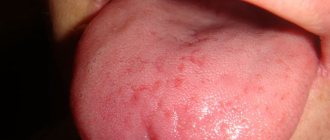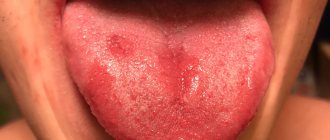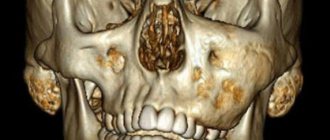A furuncle is an acute purulent inflammation of the hair follicle, sebaceous gland and the surrounding subcutaneous tissue.
It can develop on any part of the body that has hair, with the exception of the palms and soles, where there are no hair follicles. The predominant localization is the face, back of the head, groin areas, buttocks, dorsum of the forearms and hands. The most common pathogen is staphylococcus. The development of the disease is facilitated by constant contamination and friction of the skin on clothing, abrasions, scratching, as well as increased activity of the sweat and sebaceous glands in certain diseases (seborrhea, acne, etc.), decreased immunity of the body, and hypovitaminosis. Most often, boils occur during puberty in adolescents, as well as with endocrine disorders (diabetes mellitus, etc.).
Carbuncle
A carbuncle is several boils connected to each other by numerous passages. The infection usually develops due to the ingestion of Staphylococcus aureus and can lead to significant skin necrosis. During treatment, the patient is prescribed antibiotics, and sometimes surgery is required.
Description of the disease
Boils can occur in both young children and adolescents. Today they are the most common purulent skin lesion. Inflammation can affect any area where there are hair follicles. Most often, boils appear on the child’s head and neck, less often on the body (in the groin, on the back or stomach, under the armpit), on the legs and arms. The main feature of the course of this pathology in children is the high risk of inflammation spreading to neighboring tissues and structures, as well as its spread through the bloodstream, leading to the development of dangerous complications.
What is prohibited to do
The effect of treating a boil will be positive if you do not make mistakes. Here are some actions that are prohibited from doing with abscesses on the lip:
- Do not rub, scratch, or touch the boil with your hands during treatment.
- Do not try to open the formation yourself: do not pierce or squeeze it out. You can introduce an infection into the wound, even if you treat the instrument with alcohol.
- Do not apply cosmetic creams or foundation to the affected area and do not get it too wet.
- Do not prescribe self-medication. This is especially true for illness in children.
- If you see the boil growing and nothing is helping, see a dermatologist.
- Before a doctor examines the affected area, do not use dyes (iodine, brilliant green), as this interferes with the diagnosis.
Causes of boils in children
Most often, inflammation develops due to tissue damage by Staphylococcus aureus, less often the causative agent is other groups of staphylococci or streptococci. All of them are on the skin almost constantly, but in a normal state of immunity they cannot cause disease. The pathological process starts when exposed to certain unfavorable factors:
- wounds, scratches on the skin;
- skin diseases (eczema, atopic dermatitis);
- decreased immunity due to acute respiratory viral infections, operations, injuries, exacerbation of chronic diseases);
- congenital immunodeficiency conditions;
- diabetes mellitus and metabolic disorders (often cause the constant appearance of boils in a child);
- chronic infections: tuberculosis, pyelonephritis, sinusitis, etc.
Preventing boils
To avoid the appearance of boils on the lips, you must follow some preventive measures:
- Maintain personal hygiene. Do not use other people's cosmetics or hygiene items, as this is how staphylococcus infection occurs.
- Balance your diet. It should be complete and correct (less flour, fatty, sweet, more fruits and vegetables).
- If wounds form on the skin of your lips and around them, be sure to disinfect them.
- Lead a healthy lifestyle, play sports, get fit.
Furunculosis is a dangerous disease. If you delay in treating boils on your lips, you may experience serious negative consequences. To avoid this, engage in the prevention of pathology, and at the first sign of it, contact a dermatologist and refuse self-treatment.
Pathogenesis and stages of development
During the development process, the boil goes through three successive stages:
- initial (infiltration): the inflammatory process begins at the mouth of the follicle and gradually spreads;
- necrotic (maturation): inflammation engulfs the entire cavity of the follicle, causing necrosis and purulent melting of tissue; the process lasts from several days to 2 weeks and ends with a rupture of the skin over the center of the boil;
- healing stage: after the pus has drained and the cavity of the lesion has been cleaned, it gradually scars with the formation of a scar.
Symptoms of a boil in a child
The main symptoms of a boil in a one-year-old child, preschool and school-age children are the same and depend on the stage of development of the disease.
At the initial stage, an area of redness appears on the skin, which gradually increases, but practically does not cause discomfort. As the pathology progresses, a purulent area appears in the center of the lesion, and the area of inflammation increases in size and becomes sharply painful. Then a necrotic rod is formed inside the cavity, which from the outside looks like a dark dot in the very center of the boil. After a few days, the abscess breaks through, its contents come out, after which the healing process begins. A small boil, especially if it is located on a child's hand, foot or finger, rarely causes general symptoms. With multiple inflammatory foci, as well as when localized in an area with a large number of blood and lymphatic vessels (face, neck, groin, armpits), the baby may have a fever, weakness, malaise and other signs of general intoxication.
Symptoms of a boil
- The disease begins with a slight tingling sensation, changes in sensitivity (numbness) of a certain area of the skin, chills and a slight increase in body temperature.
- Pain, swelling and redness of the skin appear with the formation of a dense nodule with a diameter of up to 2 cm.
- Then, in the center of this nodule, corresponding to the exit of the hair, a so-called rod (a section of dead tissue) appears, which is gradually torn away, after which the wounded defect is cleared of pus and heals with the formation of a scar.
- With a boil in the area of the upper lip, nose, nasolabial folds and bridge of the nose, there is a high risk of infection spreading with the development of purulent meningitis and sepsis. Over the course of 1–2 days, an inflammatory infiltrate forms. A facial boil is accompanied by severe swelling, although the pain may be minor.
Diagnosis of boils in children
Diagnosis and treatment of boils in children is carried out by a dermatologist, often requiring the help of a surgeon and/or otolaryngologist. Making a diagnosis is not difficult, since the formation is clearly visible during a routine examination. If boils appear in a child too often and/or in large numbers, a more detailed examination is required to clarify the cause of this condition. Depending on the situation, the following is prescribed:
- microscopy and bacterial culture of the abscess contents;
- general and biochemical blood test;
- glucose tolerance test for suspected diabetes mellitus;
- study of the state of immunity;
- Ultrasound of internal organs, examination of the nasal cavity and sinuses, chest x-ray and other studies aimed at searching for chronic foci of inflammation.
Pediatric doctors of other specialties often join the examination: endocrinologists, pulmonologists, gastroenterologists and immunologists.
In addition, if you suspect the development of a boil, it is imperative to involve a pediatric surgeon in the diagnosis. His intervention will help to promptly notice the formation of an abscess and take the necessary measures (opening the abscess, washing the cavity, bandaging).
Diagnostics
Due to the fact that the foci of inflammation are superficial (except for ulcers in the ear), it is not difficult to diagnose furunculosis. However, with long-term, treatment-resistant furunculosis, there may be a need for extensive diagnostics to establish the exact causes of the disease. In this case, immunodiagnostics, a detailed blood test are performed, and the boil is examined for bacterial seeding of the purulent contents. If the study does not produce results, it is necessary to do a full examination of the body, since furunculosis may be the result of some general disease (blood disease, diabetes, etc.).
Treatment of boils in children
If the child’s boil is small in size and is not located on the face, neck or knee, treatment at home is allowed. In case of extensive lesions or multiple purulent foci, hospitalization is required.
With a relatively mild course of the disease, conservative treatment is sufficient, which depends on the stage of development of the disease:
- at the initial stage, alcohol solutions and dry heat are used to accelerate ripening;
- at the necrotic stage, antibacterial agents, proteolytic drugs and regular wound washing are necessary;
- at the healing stage, agents are used that accelerate regeneration in combination with antibacterial treatment.
In more severe cases, local treatment is supplemented with systemic drugs: antibiotics, anti-inflammatory drugs, immunostimulants, etc. If the infection spreads to adjacent tissues with the development of abscesses or phlegmons, surgical assistance is required: opening and draining the abscess.
Treatment of furunculosis
Furunculosis is a rather serious disease that should be treated with great caution and in no case should you self-medicate. You should not make compresses, use ichthyol and Vishnevsky ointment - in most cases this leads to the spread of the inflammatory process.
Treatment of a boil is only surgical, because no other therapy will lead to success if the focus of purulent inflammation is not promptly removed or opened and drained. The basic principle of purulent surgery “Ubi pus, ibi evacua” (where there is pus, excise and open there), known since the time of Hippocrates, has not lost its significance to this day, despite the use of highly effective antibacterial drugs, powerful detoxification, immune therapy, etc. .
Opening a boil is usually performed under local anesthesia and is painless for the patient. The point of treating a boil, like any purulent lesion, is to allow the purulent discharge to drain out, and then ensure constant drainage from the wound.
Simple (uncomplicated) boils can be treated on an outpatient basis and do not require hospitalization. But in the case of a severe course, if the patient develops swelling of the soft tissues of the cheek, lip or eye, emergency hospitalization in the surgical department is necessary to constantly monitor the development of the process and prevent complications.
At high temperatures, strict bed rest, liquid food are prescribed, and the patient is forbidden to talk or chew.
Prognosis and prevention
Single boils that occur without complications completely disappear within 2-3 weeks.
With relatively frequent relapses (exacerbations once a year or more often), the likelihood of complications is much higher. In this case, regular monitoring, immunostimulating procedures, and treatment of underlying diseases are required. Prevention of the development of boils in children includes careful skin care, regular hardening and strengthening of the immune system, timely treatment of acute and chronic diseases.
A boil is not just a pimple. An abscess can cause severe complications, including sepsis and meningitis, which is why any such formation on the body of a child or teenager requires careful monitoring. The specialists of the SM-Doctor clinic will select the optimal method of treating and preventing this problem.
Risks and complications
Regardless of where the boil is located - under the upper or lower lip, it is dangerous because it is located close to the anterior facial vein, due to which the inflammation can reach the brain. With this complication, death is possible.
There are cases of acute disease when necrosis and suppuration affect the deeper layers of the skin. The inflammatory process can even reach the subcutaneous tissue, which is why there is a risk of phlegmon or abscess formation.
When the boil has grown in size, it causes severe pain under any mechanical impact. It hurts to chew, open your mouth, and touch your lips. In this case, many people decide to squeeze out the boil themselves, but this is strictly prohibited. There is a risk of the formation of a malignant boil, which can lead to very negative consequences:
- the pathology will spread to the orbit;
- thrombosis of the facial veins will occur with subsequent damage to the meninges.
Another complication from boils is the formation of an abscess or phlegmonous inflammation. These phenomena are observed:
- with weakened immunity;
- in those who have severe concomitant diseases;
- in case of improper treatment.











